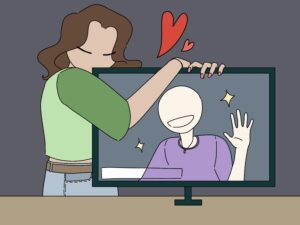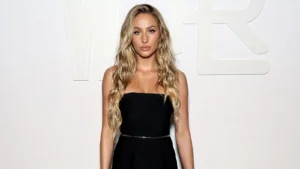The Ethics of Parasocial Relationships in the Digital Age
Published on April 9, 2024, 11:15 a.m.
by Meg Fullen.
In the ever-changing world of digital media, the landscape of social interaction has expanded. Parasocial relationships have become increasingly prevalent through the increase of social media platforms. These platforms give influencers, brands and celebrities a new way to connect with users as they consume content.

So, what are parasocial relationships and what are their ethical implications for public relations practitioners?
Chronicles of attachment
Parasocial relationships are one-sided relationships where one person invests their time, interest and energy into a prominent figure, while the figure is completely unaware of their existence. These relationships are not new developments; in fact the term was first used in 1956 to describe the relationship between a media personality and spectator.
One of the prominent cases of celebrities and parasocial relationships before the advent of social media is Princess Diana. Coined the “people’s princess,” Diana was on the cover of seemingly every magazine and constantly in the news, so many fans felt like they knew her personally. When she died in 1997, her funeral was viewed by two billion people worldwide and attended by 2,000 people. Although only a handful of people knew her personally, millions of people mourned her death, and the fascination of her still lives on to this day.
Parasocial relationships are a common phenomenon between a fan and a figure. Research from Thriveworks shows that 51% of Americans are likely to have been in a parasocial relationship; however, only 16% admit to it.
Gayle Stever, author of “The Psychology of Celebrity,” emphasized its commonality. “Everyone has parasocial relationships, everyone, because a parasocial relationship is that you know someone through media, you know them really well, and they don’t know you back,” she explained. “We all have people we know through media that don’t know us back.”
Virtual bonds
With social media’s popularity, parasocial relationships have proliferated, with many people being on the receiving end of the relationship. Social media gives users more access into the everyday lives of their favorite celebrities or influencers. Social media’s accessibility includes celebrities talking directly to their fans, liking comments or even just frequently updating their social media platforms.
The rise of social media influencers brings up a new form of parasocial relationships. Viewers of

influencer-produced content find themselves relating to these influencers on a personal level, thus making many of them feel like they know the influencer personally. For example, Alix Earle talks about her struggles with acne, a relatable situation for many of her followers.
Gourav Rath, a University of Alabama doctoral candidate in communication studies, noted how the accessibility of these social media influencers has led to an evolution in parasocial relationships. “Users have been able to reach out to the influencers and direct message them,” he said, increasing the perception of intimacy.
Another aspect of the dynamic between parasocial relationships and social media is repeated exposure and brand personality development. Brands and corporations have picked up on this strategy and have started utilizing their social media platforms frequently.
Many brands on social media use human personalities to construct their brand personalities on their platforms. Chris Roberts, UA mass communication professor, explained the strategy through the example of the Wendy’s corporation. Wendy’s consistently uses sassy and funny posts and comment replies to X users. Of course, Wendy is a fictional character, but using human personality traits makes the brand seem more personable, thus creating a parasocial relationship with its followers.
“We have even anthropomorphized corporations into some sort of human thing that we have a relationship with, and that to me is the social media part of it,” Roberts explained. “We’re in the social media era where it’s even easier to create a parasocial relationship with something that isn’t even a thing.”
Unveiling the ethical landscape
When it comes down to the ethical implications of parasocial relationships, public relations practitioners have an interesting job. Knowing how to use social media to a client’s advantage is an important aspect. Implementing celebrities into a campaign to target fans can either do very well or fail in an instant.
Roberts highlighted this possibility through Cinnabon’s tribute to Carrie Fisher after her death. The brand used its iconic cinnamon rolls to symbolize the hair style of Princess Leia, the character she played in “Star Wars.” The post received a lot of backlash from fans criticizing Cinnabon for profiting from her death.
One of the other important aspects in selecting a social media strategy is knowing which platform to use. Most social media platforms are free and give celebrities and influencers the chance to post directly to their fans, increasing the chances for parasocial relationships to form. For example, many celebrities and influencers use platforms like TikTok and Instagram to engage with their fans through sharing personal pictures and videos. These platforms give fans an inside look into their everyday lives.

However, harmful outcomes might result from the use of certain apps such as Cameo, which allows fans to pay for personal video messages from their favorite celebrities. As Stever noted, “There are celebrities on Cameo who are charging $600 to $800 for a video. In my opinion, it is a little bit exploitative. There are people out there that are going to pay whatever it is, whether they can afford it or not.” PR practitioners must question the ethicality of marketing strategies that allow celebrities to exploit their fans for profit.
As social media continues to shape our interactions, the line between friend and follower has blurred. With new ways to access celebrities and influencers, the trajectory of these relationships remains uncertain.




